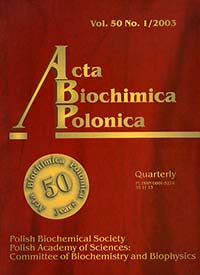Fibrin D-dimer impairs the accumulation and anticoagulant properties of heparan sulphate and stimulates secretion of plasminogen activator inhibitor-1 by rabbit coronary endothelial cells.
Abstract
Fibrin split product D-dimer (DD) is most probably involved in the development of vascular disorders. At 1.5 microM concentration DD inhibited the incorporation of D-[1-(3)H]glucosamine hydrochloride and [2-(14)C]acetate x Na into pericellular heparan sulphate (HS) of rabbit coronary endothelial cells without affecting other groups of glycosaminoglycans (GAGs). At the same time, DD reduced HS ability to bind antithrombin (AT) and suppressed NO production. The effect of DD on pericellular GAGs was similar to that of N(omega)-methyl-L-arginine, the competitive inhibitor of endothelial NO synthase (eNOS). L-Ascorbic acid, eNOS activator, increased the level of endogenous NO in the DD-treated cells, and restored HS accumulation and antithrombin binding. It is suggested that DD influence on endothelial HS may be mediated by NO production. Another effect of DD, namely, stimulation of plasminogen activator inhibitor-1 (PAI-1) secretion did not depend on the NO level. The decreased HS content, reduced anticoagulant properties of HS, and increased PAI-1 secretion disorganized the endothelial matrix, and promoted fibrin formation and vascular damage. This points to DD as an important factor in the development of vascular disorders.Acta Biochimica Polonica is an OpenAccess quarterly and publishes four issues a year. All contents are distributed under the Creative Commons Attribution-ShareAlike 4.0 International (CC BY 4.0) license. Everybody may use the content following terms: Attribution — You must give appropriate credit, provide a link to the license, and indicate if changes were made. You may do so in any reasonable manner, but not in any way that suggests the licensor endorses you or your use.
Copyright for all published papers © stays with the authors.
Copyright for the journal: © Polish Biochemical Society.


